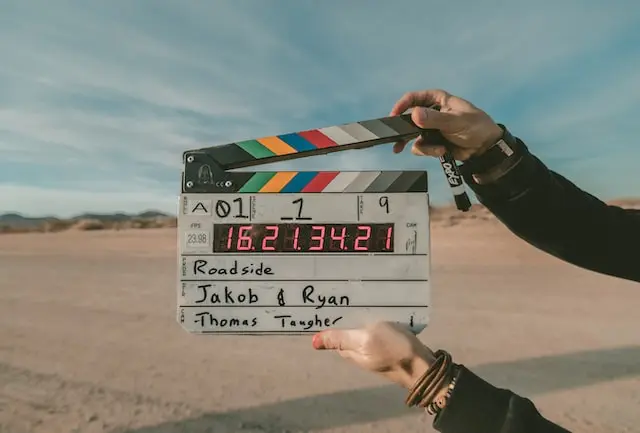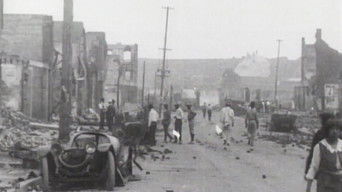Go back

The Kennedys (1): The Father, 1900-61
Episode number: 1
Overview: No family has had such a powerful hold on the American imagination. A saga of ambition, wealth, family loyalty and personal tragedy, the Kennedy story is unlike any other. From Joseph Kennedy's rise on Wall Street and frustrations in politics, through John Kennedy's march to the presidency -- orchestrated by his father - -to Edward Kennedy's withdrawal from the 1980 presidential race following the scandal of Chappaquidick, the family has left a legacy that continues to influence politics today.

The Kennedys (2): The Sons, 1961-80
Episode number: 2
Overview: No family has had such a powerful hold on the American imagination. A saga of ambition, wealth, family loyalty and personal tragedy, the Kennedy story is unlike any other. From Joseph Kennedy's rise on Wall Street and frustrations in politics, through John Kennedy's march to the presidency -- orchestrated by his father - -to Edward Kennedy's withdrawal from the 1980 presidential race following the scandal of Chappaquidick, the family has left a legacy that continues to influence politics today.

The Donner Party
Episode number: 3
Overview: Of all the 19th century pioneer stories, none exerts so powerful a hold on the American imagination as this, during the worst winter ever recorded in the High Sierras. In June, 1846, 87 men, women and children began their legendary 2,000 mile journey from Illinois to California. They packed huge wagons, took food, hired servants. When family leaders made the fateful decision to take an untried short cut to beat the coming winter, only half would come out alive.

Liberators: Fighting on Two Fronts in World War II
Episode number: 4

George Washington: The Man Who Wouldn't Be King
Episode number: 5
Overview: He was bumbling, yet ambitious. He volunteered to serve his country, but insisted on being reimbursed for expenses. He was the most famous general of the Revolution but a dismal tactician on the battlefield. Greedy and selfish, service to the colonies would profoundly change him. The man who came to symbolize the American Revolution could also be incredibly brave, generous and an inspirational leader who scorned attempts to participate in any system but a democratic one.

Last Stand at Little Big Horn
Episode number: 6
Overview: In 1876, when the U.S. Army planned its biggest Indian campaign yet against Sitting Bull and Crazy Horse, General George Custer led the chase. Custer and his 210 men were surprised and surrounded, the result of arrogance, bad planning and bad intelligence. The battle took "about as much time as it takes a hungry man to eat dinner," leaving no white survivors. One of the most frequently depicted and least understood moments in American history, the story is told from both sides.

If You Knew Sousa
Episode number: 7
Overview: John Phillip Sousa became America's favorite bandmaster, but band music wasn't Sousa's only passion. He was the first to bring the classics -- Verdi, Wagner, Puccini -- to a burgeoning American middle class. Wildly popular, his was the first large musical organization to go on tour and make music pay. He helped give birth to that great American institution, the small town marching band.

Simple Justice
Episode number: 8
Overview: Thirty years after the Supreme Court's "separate but equal" ruling, lawyer Charles Hamilton took over Howard University's rundown, segregated law school with the idea of training a cadre of elite African American lawyers to legally eradicate segregation, case by case, state by state. Their relentless and dangerous struggle would yield victory in the Supreme Court's landmark ruling, Brown v. Board of Education in 1954. A dramatic presentation.

Knute Rockne and His Fighting Irish
Episode number: 9
Overview: When he died in 1931 in a plane crash on his way to Hollywood to sign a film contract, the President called it a "national loss." The funeral was broadcast live on CBS Radio to Europe, South America and Asia. As Notre Dame's football coach, Knute Rockne galvanized attention to his "Fighting Irish" and was a pivotal figure in the sudden rise of sports to a position of enormous power in American life.

Sit Down And Fight
Episode number: 10
Overview: In 1936, Walter Reuther led one of the bitterest, bloodiest battles ever fought in the history of the American labor movement. By sitting down and stopping the machinery of factory production, auto workers forced the Big Three to recognize their union. GM tried turning off the heat and blocking food deliveries and Ford sent members of their private security force to beat up UAW officials, but workers stood their ground.

Rachel Carson's Silent Spring
Episode number: 11
Overview: She had been a biologist for the federal government when she first took note of the effects of the unregulated use of pesticides and herbicides, especially DDT. Magazines refused to publish her articles because they were afraid of losing advertising. When Rachel Carson published Silent Spring in 1963, she was viciously attacked, called "an ignorant and hysterical woman." But her warning sparked a revolution in environmental policy and created a new ecological consciousness.

Goin' Back to T-Town
Episode number: 12
Overview: In Tulsa, the community of Greenwood was a place where blacks had some measure of financial, social and political independence. Burned to the ground in 1921 by angry whites, Greenwood was rebuilt and boasted the largest concentration of black businesses in the country. In a nostalgic celebration of old fashioned neighborhood life, the black residents of "T-Town" relive their community's remarkable rise and ultimate decline.

Ishi: The Last Yahi Indian
Episode number: 20
Overview: When "Ishi," the last surviving member of a small Indian tribe, walked into the small California town of Oroville in 1911, he became a media curiosity and scientific "specimen." The San Francisco Museum built a Yahi house where audiences could watch Ishi make arrowheads and shoot bows. Ishi went to the theater and received invitations of marriage. But contact would bring him terrible physical and psychological consequences.